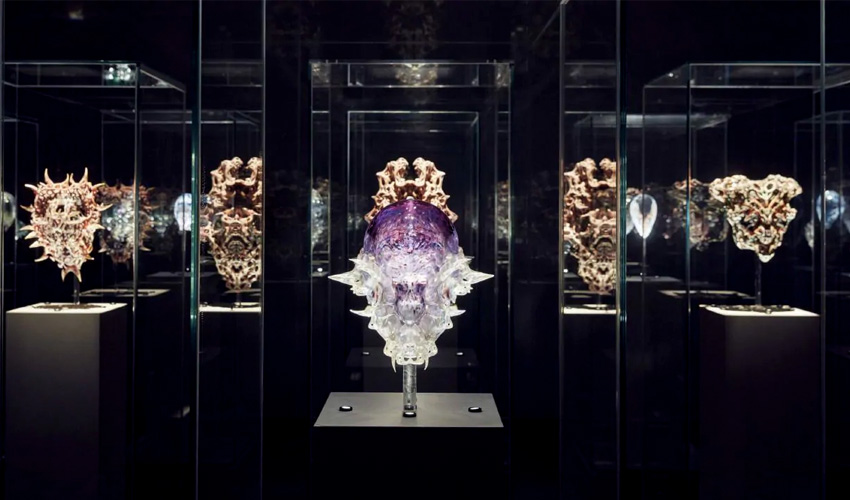www.magazine-industry-usa.com
02
'18
Written on Modified on
3D printing in art: an evolution of the concept
The arrival of 3D printing technologies in the 1980s opened a world of possibilities not only on the industrial level, but also for creative developments.

In 1826 with the arrival of the first photograph of Niépce, a new technique was discovered, a new technology to capture an image. This technology lasted almost a century without being considered art. Currently, the use of additive manufacturing technologies is going through a similar crisis in the artistic field. Obviously it is a much more complex technique that has been introduced in multiple sectors, but it does not stop being a tool of great value for artists.
One of the great benefits that has come from the 3D technologies is the opening to new fields of inspiration. This has given rise to already previously known techno-artists or bio-artists, whom have now managed to truly emerge from the hand of 3D technologies. But doubts still arise when talking about these new trends and their consideration as art and the development of new artistic conceptions.
3D printing in art: first developments
After the first decade of the 2000, the first artistic exhibitions showed 3D printed pieces. Initially shown, not as pieces of art, but as the possibilities of innovation of a new technology. It was not until 2015, that they were showing 3D printed pieces as true works of art. In the last two years exhibitions have emerged with a new vision of 3D printing.
One such exhibition is “Print the World”, at the Center Pompidou in France, which focuses on the possibility of “Mutation / Creation”, showing the world a new vision of 3D technologies with art. Another example is the 3D printed art installation at the iLight Marina Bay Festival in Singapore.
An artist, who stood out from the beginning for giving a different vision to the use of 3D technologies in art, is Gilles Azzaro, a French artist called “Voice Sculptor”. Specialised in 3D printing of sounds, phrases or speeches. It stood out in 2013 for 3D printing a sculpture with the sound of Barack Obama’s speech on 3D printing, later reproduced digitally.
The piece of Obama’s speech printed in 3D that measures 1.51 meters and required more than 350 hours of printing was the beginning of Azzaro in this field. “These first steps gave me luck since on June 18, 2014 I had the honor of presenting this work to President Obama in the White House and has given me many opportunities around the world, “Gilles Azzaro told the 3Dnatives team.
In the same years, Neri Oxman, a researcher, architect and visual artist of the MIT Media Lab, was introduced to study the juxtaposition of material properties to generate new forms inspired by nature with the help of additive manufacturing. It was already considered in 2009 for ICON magazine “Top among the most influential designers and architects that shape the future“. And in 2016 Cultural Leader in the World Economic Forum.
She describes part of her work as “A divided personality, operating today between the chisel and the gene, between the machine and the organism, between assembly and growth, between Henry Ford and Charles Darwin,” she commented in her TED Talk of 2015, dedicated to the mix between technology and biology.
From these developments new artists have emerged, from the biological vision of Neri Oxman, to the latest vision of the bio-artist Amy Karle that uses additive manufacturing techniques to examine what it means to be human and explore how to use our fusion with technology. “My project explains what it means to be human and explores how to use our union with technology for our benefit,” Amy Karle told us.
Thanks to the use of new technologies we can get to better understand the human being or it is only the arrival of technological advantages that allow us this. The evolution of this relation is giving us ways to understand art more closely.
Are the technological advantages that are giving a new conception for art?
This new opening to 3D technologies benefits artists in many aspects. From allowing them to simplify tasks such as the Spanish artist Víctor Marín who sculpts with the help of 3D technologies, to artists who have managed to explore with materials such as Neri Oxman or Emerging Objects, who have developed small stools when reusing tires.
In the case of Gilles Azzaro without the arrival of 3D technologies, he couldn’t have become a “Voice Sculptor”. This artist, who has 5 3D printers of FDM technology, has achieved that thanks to the use of additive manufacturing technologies his work is like “imaginary topographical landscapes”.
www.3dnatives.com

